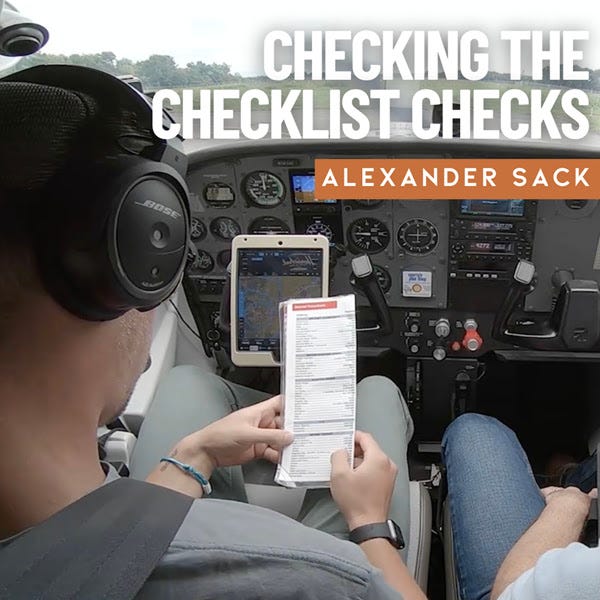Saturday morning's most interesting reads, with five can't-miss posts every week. Exclusive articles, new videos, interactive quizzes, and special aviation events–it's your weekly connection to what's happening in general aviation. Sign up for the weekly Fast Five email here.
1. I Am UNSAFE Checklist: Lessons Learned on a Fateful Night.
Very soon I was on the approach and thought I could still make 06C. The ATIS called out the overcast at 800’ AGL, the minimum I needed (mistake #5—not mine, but it counted anyway.) I held at 800’, assuming I’d see the runway lights below me and then I could continue to 06C. As I crossed the runway threshold, it was solid IMC and I had to go missed. I asked the Tower what the current ceiling was, and the response was that the ATIS was old and the ceiling was actually 400’ and you’ll have to go around.
Learn More>>
2. Checking the Checklist Checks.
Checklist usage shouldn’t feel like a chore, nor should it feel mandatory (and from a regulatory standpoint, it isn’t), but rather an act of habit. And the quality of checklists you use is directly responsible for how often you use them! Because once checklist usage feels natural instead of premediated, you don’t have to think about it anymore.
Read More>>
3. IFR Focus with PilotWorkshops: Visual Approaches.
One of the great ironies of IFR flying is that once you have the right to fly through the clouds, you take almost every opportunity to stay out of them. It’s simpler, faster, and arguably safer (at least at the GA level) to shortcut full procedures with visual ones. The go-to “instrument approach” for keeping the mail moving is: “Cleared for the visual.” However, a casual demeanor can be an invitation for catastrophe.
Read More>>
4. Pilot's Discretion Podcast, Ep 98: From Taildragger to Cirrus.
Whether it’s an open cockpit biplane or a brand new Cirrus, Shane Vande Voort says “good stick and rudder skills carry through into every airplane.” He explains why the Cirrus accident record has improved so much, how to teach modern avionics to new pilots, and why systems knowledge still matters.
Listen Now>>
5.IFR Holding Procedures Explained: A Pilot’s Guide to Holding Patterns.
When controllers anticipate a delay, usually due to a high volume of traffic, weather, or both, pilots are usually issued a holding clearance. If the holding pattern assigned by ATC is charted, pilots are expected to hold as indicated. Holding patterns at the most generally used holding fixes are charted on Low or High Altitude En Route, Area, Departure Procedure, and Arrival Charts.
Read More>>









